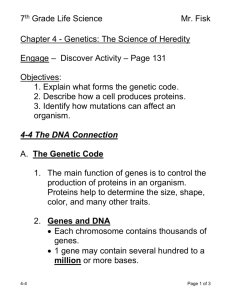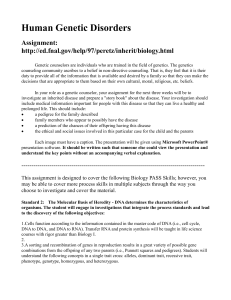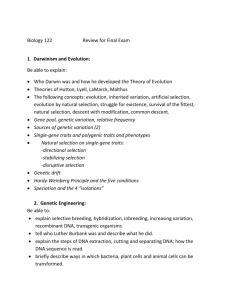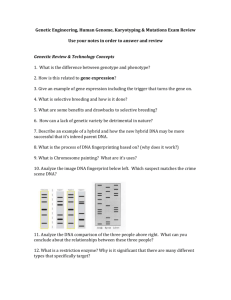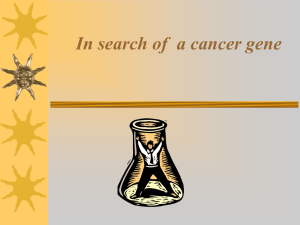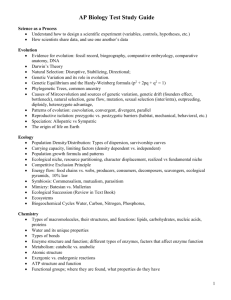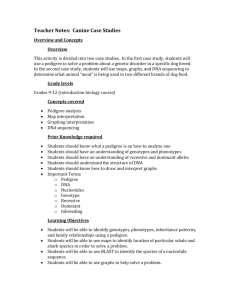Pedigree Practice Worksheet: Genetics & Inheritance
advertisement
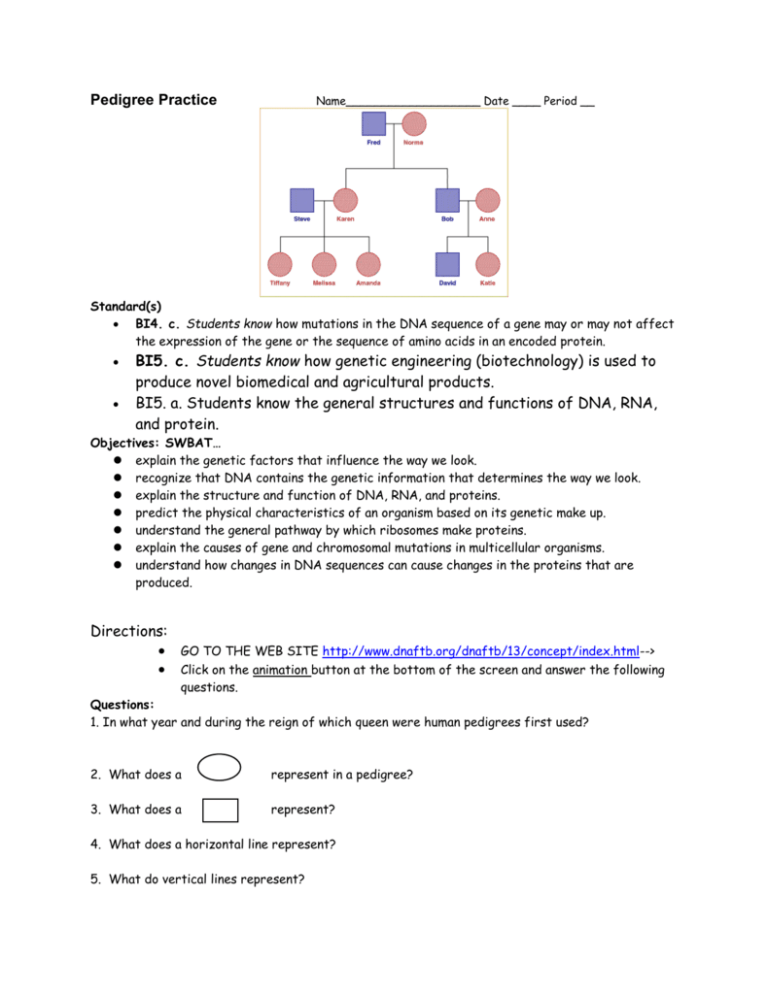
Name___________________ Date ____ Period __ Pedigree Practice Standard(s) BI4. c. Students know how mutations in the DNA sequence of a gene may or may not affect the expression of the gene or the sequence of amino acids in an encoded protein. BI5. c. Students know how genetic engineering (biotechnology) is used to produce novel biomedical and agricultural products. BI5. a. Students know the general structures and functions of DNA, RNA, and protein. Objectives: SWBAT… explain the genetic factors that influence the way we look. recognize that DNA contains the genetic information that determines the way we look. explain the structure and function of DNA, RNA, and proteins. predict the physical characteristics of an organism based on its genetic make up. understand the general pathway by which ribosomes make proteins. explain the causes of gene and chromosomal mutations in multicellular organisms. understand how changes in DNA sequences can cause changes in the proteins that are produced. Directions: GO TO THE WEB SITE http://www.dnaftb.org/dnaftb/13/concept/index.html--> Click on the animation button at the bottom of the screen and answer the following questions. Questions: 1. In what year and during the reign of which queen were human pedigrees first used? 2. What does a represent in a pedigree? 3. What does a represent? 4. What does a horizontal line represent? 5. What do vertical lines represent? 6. What bleeding disease affected this royal family? 7. In a pedigree, what does a filled square or circle represent? 8. What are Carriers? Why is it important? 9. “Draw” the pedigree given in this animation. 10. Describe what was discovered about the allele for hemophilia. 11. Why is there no information for Alexis’ sisters? 12. Read the information about the inheritance of eye color and produce a pedigree for an easily observable trait in your family (eye color, hair color, attach or free ear lobes, widows peak, rolling your tongue). Try to get 3 generations (you & siblings, parents, aunts, uncles, & grandparents). 13. Click on the problem button and write your answer below.




